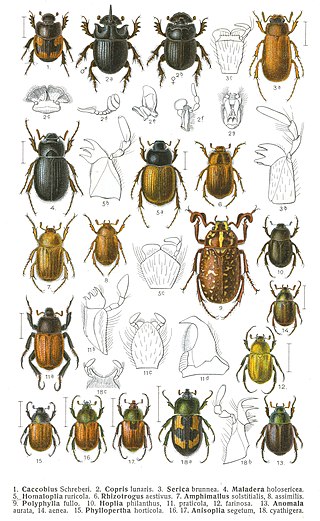
The family Scarabaeidae, as currently defined, consists of over 35,000 species of beetles worldwide; they are often called scarabs or scarab beetles. The classification of this family has undergone significant change in recent years. Several groups formerly treated as subfamilies have been elevated to family rank, and some reduced to lower ranks. The subfamilies listed in this article are in accordance with those in Catalog of Life (2023).
Orizabus mcclevei is a species of rhinoceros beetle in the family Scarabaeidae. It is found in North America.
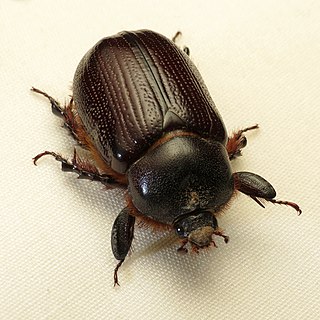
Orizabus is a genus of rhinoceros beetles in the family Scarabaeidae. There are about 10 described species in the genus Orizabus.
Orizabus pinalicus is a species of rhinoceros beetle in the family Scarabaeidae. It is found in North America.
Orizabus ligyroides is a species of rhinoceros beetle in the family Scarabaeidae. It is found in North America.
Haroldiataenius is a genus of aphodiine dung beetles in the family Scarabaeidae. There are about nine described species in Haroldiataenius.
Thyce is a genus of May beetles and junebugs in the family Scarabaeidae. There are at least two described species in Thyce.
Oxygrylius is a genus of rhinoceros beetles in the family Scarabaeidae. There are at least two described species in Oxygrylius.
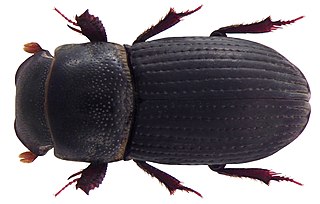
Dialytes is a genus of aphodiine dung beetles in the family Scarabaeidae. There are about five described species in Dialytes.
Podolasiini is a tribe of May beetles and junebugs in the family Scarabaeidae. There are at least 2 genera and about 18 described species in Podolasiini.
Euetheola is a genus of rhinoceros beetles in the family Scarabaeidae. There are about seven described species in Euetheola.
Orizabus pyriformis is a species of rhinoceros beetle in the family Scarabaeidae. It is found in North America.
Plectris is a genus of May beetles and junebugs in the family Scarabaeidae. There are more than 360 described species in Plectris.
Anoplognatho is a genus of rhinoceros beetles in the family Scarabaeidae. There is one described species in Anoplognatho, A. dunnianus.
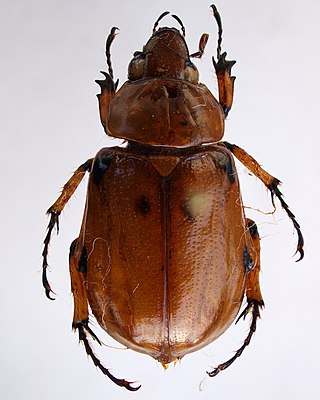
Ancognatha is a genus of rhinoceros beetles in the family Scarabaeidae. There are more than 20 described species in Ancognatha.
Aphonus is a genus of North American rhinoceros beetles in the family Scarabaeidae. There are about six described species in Aphonus.
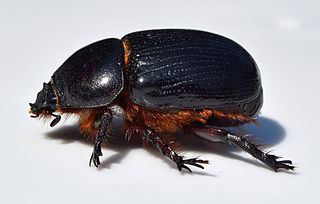
Xyloryctes is a genus of rhinoceros beetles in the family Scarabaeidae. There are about 13 described species in Xyloryctes.
Diapterna hamata is a species of aphodiine dung beetle in the family Scarabaeidae. It is found in North America.
Hornietus is a genus of aphodiine dung beetles in the family Scarabaeidae, the sole genus of the tribe Hornietiini. There is one described species in the genus, Hornietus ventralis, found in North America.
Coscinocephalus is a genus of rhinoceros beetles in the family Scarabaeidae. There are at least two described species in Coscinocephalus.




